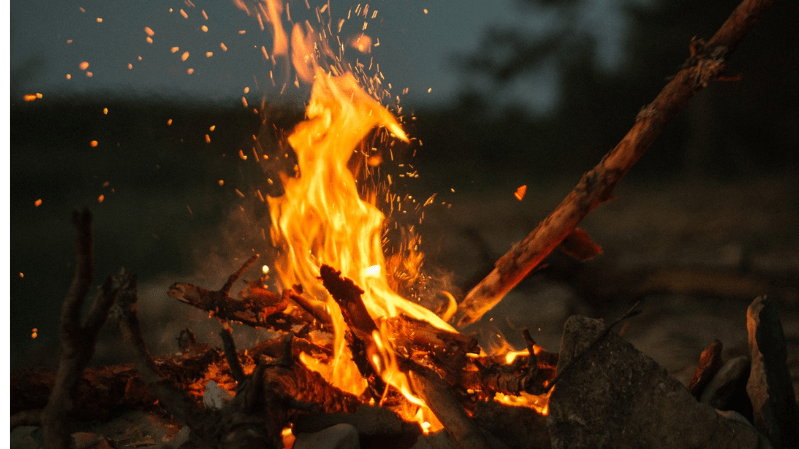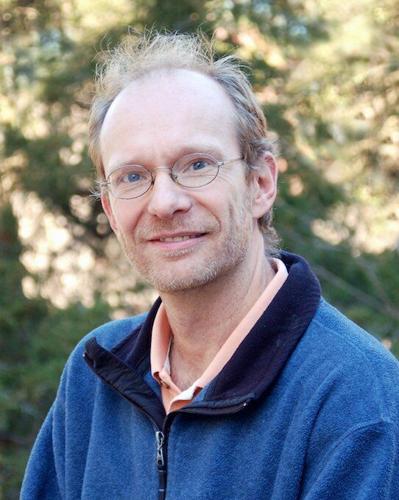Balancing fire protection, recreational esthetics and ecological health
Conifers are more susceptible to wildfire, but the fortunate mix of deciduous trees in our Muskoka forests creates a more resilient ecosystem.
By Richard Lammers.

I am walking around my yard appreciating the natural beauty of the forest, especially the trees close to my house. Should I really remove those conifers?
Many of us choose to live in Muskoka for its lakes, rivers and woodlands. Typically, these forests are dense with mixed conifers (evergreen) and deciduous (broadleaf) trees. But recently I have been thinking about some of the dangers inherent in these forests.
Last year was the busiest fire season in this country and we saw many images of devastating fires from Western Canada, especially from recreational areas with many lakes — just like here.
In Muskoka, we experienced smoke brought in from Quebec and northern Ontario. In other years, we have seen smoke from fires originating in Parry Sound.
Is it just a matter of time before the right environmental conditions trigger a major wildland fire in this area?
What can we do to minimize the risk of fire to our houses? Conifers are more susceptible to wildfire, but the fortunate mix of deciduous trees in our Muskoka forests creates a more resilient ecosystem. There will still be risk, especially as the climate warms and droughts become more frequent.
The FireSmart Canada website provides the excellent FireSmart Begins at Home Guide at https://firesmartcanada.ca and it really opened my eyes to the fire vulnerability of our homes.
The guide identifies several buffers for fire safety around every dwelling. Within 1.5 metres of all structures all combustibles such as needles, leaves and firewood should be removed. This means no easily accessible wood piles next to your back door.
Within 10 metres, flammable shrubs and conifers should be removed. In the 10- to 30-metre zone, conifers should be thinned to three metres between the edges of branches, meaning trunk-to-trunk distance could be seven to 10 metres, depending on the species.
Within our urban areas, this 30-metre margin may not represent substantial changes as the environment has been so heavily modified. In the forested regions of Muskoka distant from the urban areas with large spacing between houses, the impact may not be large as forest will still exist between these 30-metre fire buffers.
But I wonder about the “urban fringes” and cottage areas located between relatively high and low density, where houses may be close enough that the 30-metre margin can impact the forest look and feel and maybe even alter the ecological functioning of the local forest.
How do the FireSmart recommendations reconcile with how I feel about the local natural environment? Will they change the nature of the forest in my immediate neighbourhood? Will meeting the standards of FireSmart diminish the quality of my local environmental experience? Will the increased warming in the future bring more dry conditions that will create a greater risk of fire?
This article is meant to explore how we might balance protection and ecological health.
I want to protect my house and I want my neighbours to protect their houses. I also want to preserve the natural beauty of my surroundings. We need to have conversations with those well versed in fire safety about how best to move forward.
In a small way, this gets at the heart of integrated watershed management, where we need to engage in decision-making — and those decisions need to be made now under the shadow of future uncertainty.
Within all of this are the conflicting needs and desires of the community. Integrated watershed management provides a method for communities to come together to build knowledge, identify the problems, generate a variety of solutions and make decisions to establish a sustainable path forward. It may also help us to resolve those indecisions in our own minds.

This is the latest in our summer series of articles from the Muskoka Watershed Council on “Living in A Changing Watershed” published on MuskokaRegion.com. Each explores a common theme of integration and relationships — how we cannot thrive without understanding how ecological forces, including human actions, shape the world we live in. This week’s contributor is Dr. Richard Lammers, a Bracebridge resident, member of the Muskoka Watershed Council and research faculty at the University of New Hampshire. The series editor is Dr. Neil Hutchinson, a retired aquatic scientist, Bracebridge resident and Director: Muskoka Watershed Council, Friends of the Muskoka Watershed and Georgian Bay Forever.
